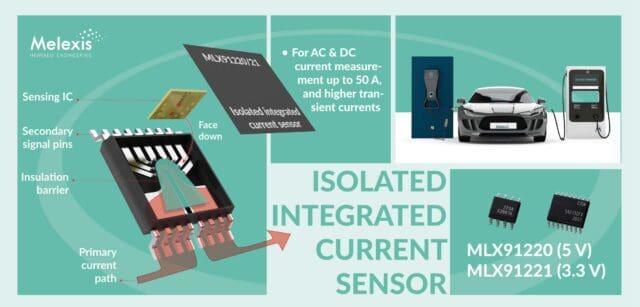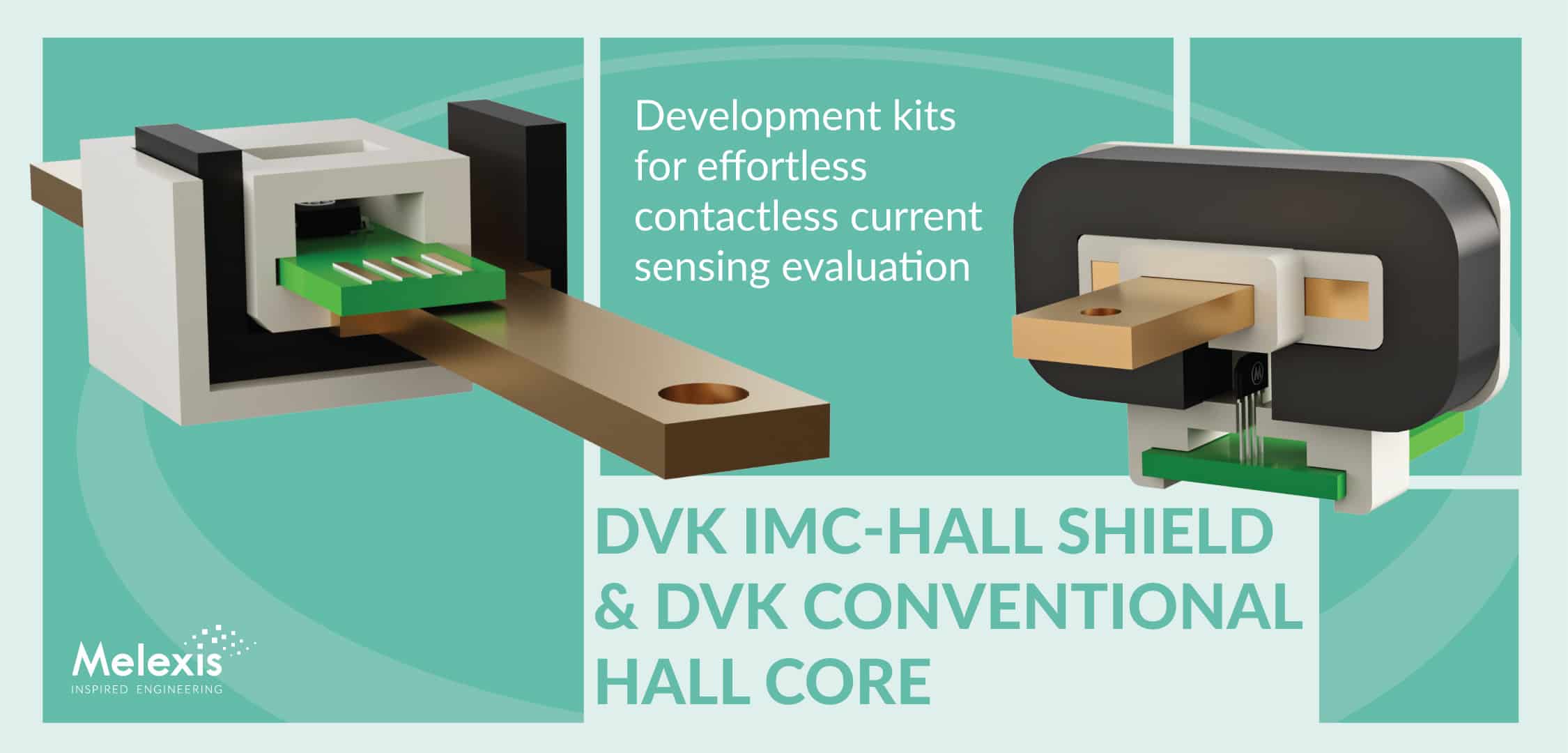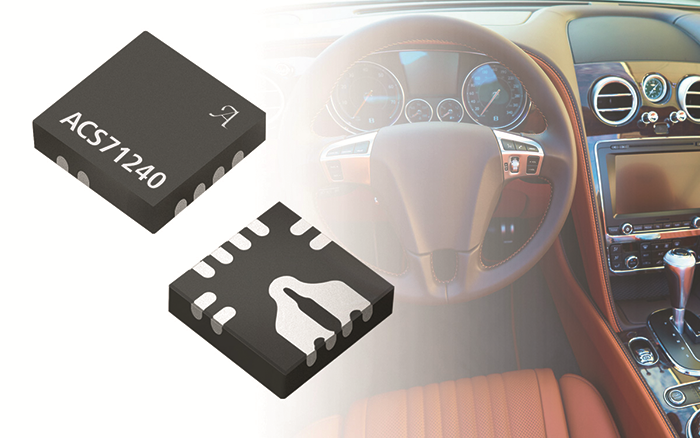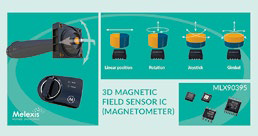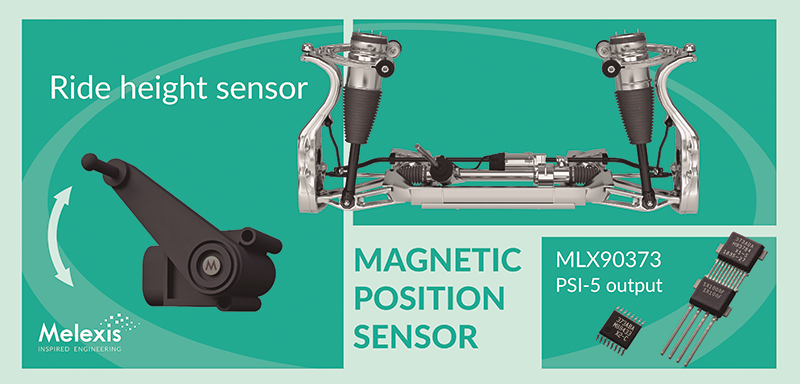Melexis, a global microelectronics engineering company, announces its second generation MLX91220 (5V) and MLX91221 (3,3V) isolated integrated current sensors. Hall effect based current sensors are qualified for use in a number of automotive and industrial applications, such as on-board chargers (OBCs), DC/DC converters, power supplies, and small electrical drives. With a bandwidth of 300 kHz, they are suited to a variety of power conversion applications below 50 A RMS.
The MLX91220/21 is based on the first generation of current sensors, which integrated high-precision signal conditioning and sensing elements with voltage isolation. The new generation current sensors, which are available in narrow body SOIC8 and wide body SOIC16 miniature packages, improve on this by increasing the bandwidth to 300 kHz, resulting in a response time of just 2 us. This response time supports higher switching frequencies and more precise tracking in control loops.
The MLX91220 also enhances the dual On-Chip Overcurrent Detection (OCD) function, which enables essential monitoring mechanisms using both an internal and external feature. The internal OCD threshold can be selected in or out of range, with a 2 µs response time. The external OCD threshold can be set, via an external reference voltage, within or near the output operating range, with a typical response time of 10 µs.
Both can be used in an application, to provide redundancy or to detect separate short-circuit and out-of-range conditions.
The MLX91220 and MLX91221 offer output mode flexibility defined at the Melexis factory. Automotive applications often prefer ratiometric analog output voltages, while industrial applications often rely on a fixed sensitivity built around a reference voltage. The output mode is set at the factory and can be selected with intuitive product order codes.
Unlike most current sensors, the MLX91220/21 does not rely on ferromagnetic hubs. Instead, it uses an internal differential sensing concept to detect the magnetic field generated by the integrated primary conductor. This differential concept also provides a high level of immunity to stray fields, allowing for higher density power electronics, as the sensor is less affected by stray magnetic fields in the vicinity.
The SOIC8 package has an isolation rating of 2,4 kVrms per IEC/UL-62368, and the wide body SOIC16 package doubles this 4,8 kV isolation rating. The SOIC16 package also offers lower primary conductor resistance, thanks to its higher pin count and increased conductor thickness. Both variants are distinguished from discrete shunt solutions by having a lower resistivity, the SOIC16 sample 0,75 mOhm, while the SOIC8 measures 0,85 mOhm; significantly lower than bypass-based solutions.
The extensive feature integration and design flexibility offered by the MLX91220 and MLX91221 models give customers a competitive advantage when looking to optimize performance using a single product. To help customers simplify design and take advantage of new features, Melexis continually develops new technologies to enhance its existing sensor offerings.
Samples and a development kit are already available. Contact Melexis or your local representative for more information.


